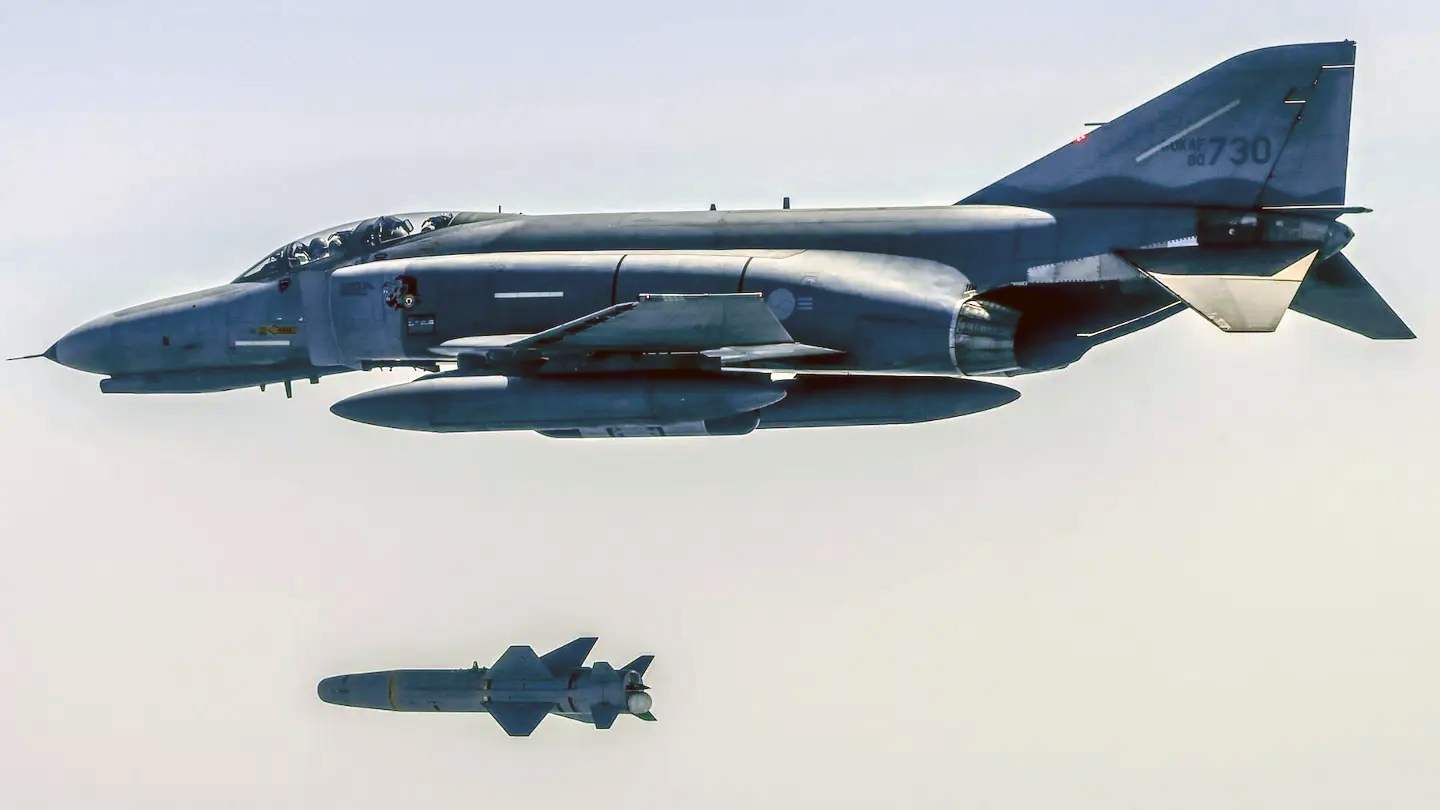The South Korean Air Force has officially said goodbye to the AGM-142 Popeye air-to-surface missile, following a final live-fire exercise involving F-4E Phantom II fighters firing these weapons. This comes ahead of the official retirement of the ‘Goblin of the Sky,’ as the Phantom is nicknamed in South Korean service, which is set to take place in just a few weeks time in June.
Video footage of the exercise, which took place on April 18 and involved pilots from the 10th Fighter Wing based at Suwon Air Base, was released by Yu Yongwon TV, and can be seen below. In all, four F-4Es reportedly took part in the exercise, although the footage only shows two armed with AGM-142s. The F-4E is ostensibly the only aircraft capable of firing the AGM-142 within the inventory of the Republic of Korea Air Force (ROKAF). South Korea procured an initial batch of 116 Popeyes from the U.S. via foreign military sale in late 1996, although how many addditional missiles it may have purchased after this remains unclear. The AGM-142 was later introduced into service with the ROKAF in 2002.

The AGM-142 Popeye is an Israeli solid-fueled, air-to-surface missile. Popeye 1 (AGM-142A) is just under five meters (15.8 feet) long, and has a launch weight of 1,360 kilograms (close to 3,000 pounds).
Armed with a 350–365 kilogram (771–804 pound) high explosive or penetrator warhead, Popeye 1 has a range of around 80 kilometers (roughly 50 miles).

Popeye 1 uses an inertial navigation system (INS) for midcourse guidance, and then switches to a TV or infrared sensor for terminal guidance. It does this via data link, with an antenna mounted on its tail, allowing for man-in-the-loop control of the missile for final targeting. The Popeye is usually controlled by the launching aircraft or another crewed aerial asset from dozens of miles away, via a data link pod that connects with the missile to establish a line-of-sight radio connection. This allows for finely-tuned adjustments of Popeye’s point of impact to be made as the missile flies towards its target all the way up to or very near to point of impact, affording the missile extremely high levels of accuracy. You can read more about man-in-the-loop control, and its operational benefits, here.
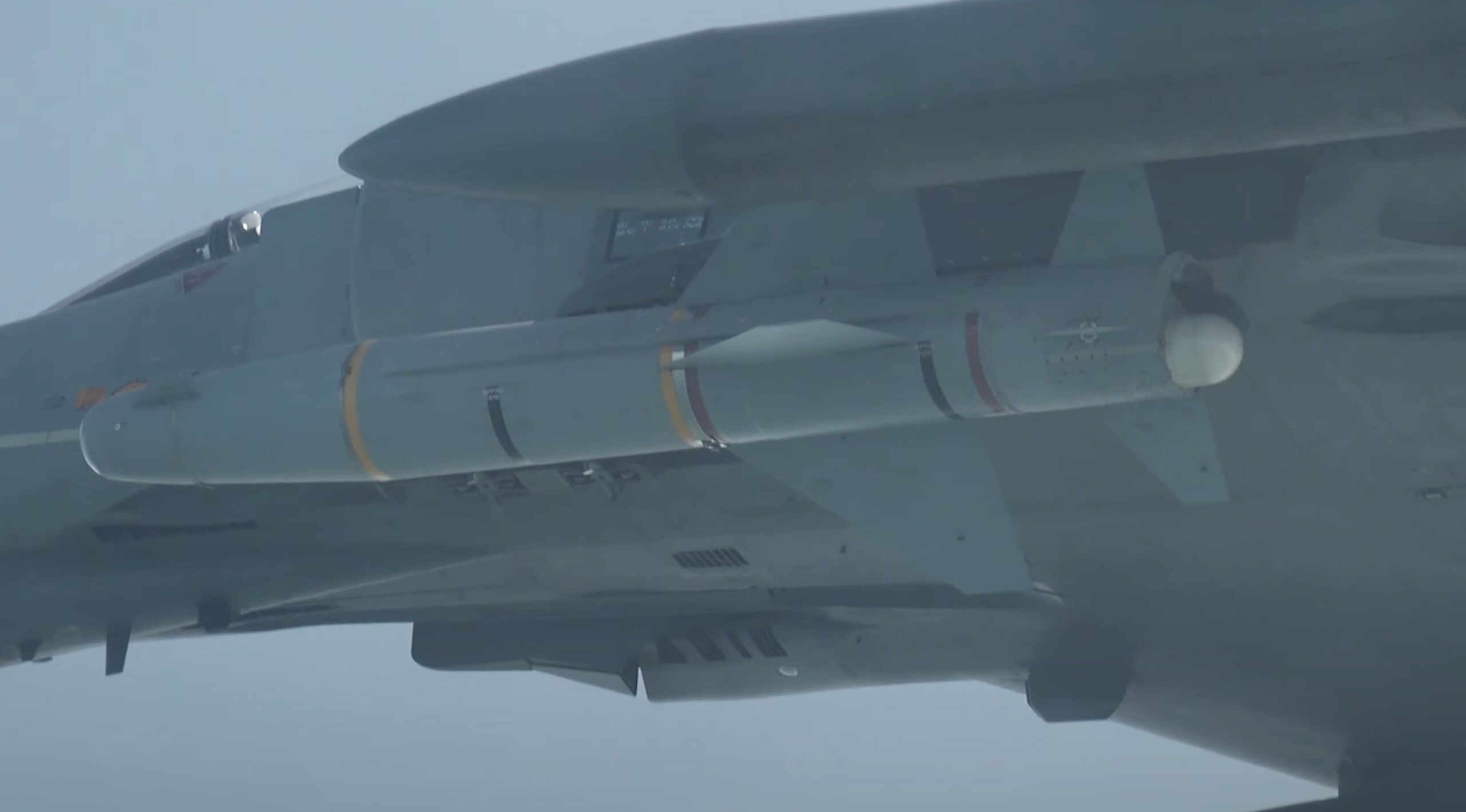
Rafael Advanced Defense Systems reportedly began work on the missile in the early 1980s. Popeye 1 was introduced into service with the Israeli Air Force in 1986. A smaller, and lighter, variant, Popeye 2 (AGM-142B) ostensibly entered Israeli service in 1995. The Popeye served with the USAF, as well, under the name Have Nap and equipped B-52 Stratofortresses.

In the initial frames of the video, we see two ROKAF F-4Es armed with one AGM-142 missile each. The aircraft also sport fuel tanks and AN/ASW-55 datalink pods. From there, the footage shows one of the missiles being launched, as well as its single-stage solid rocket igniting.
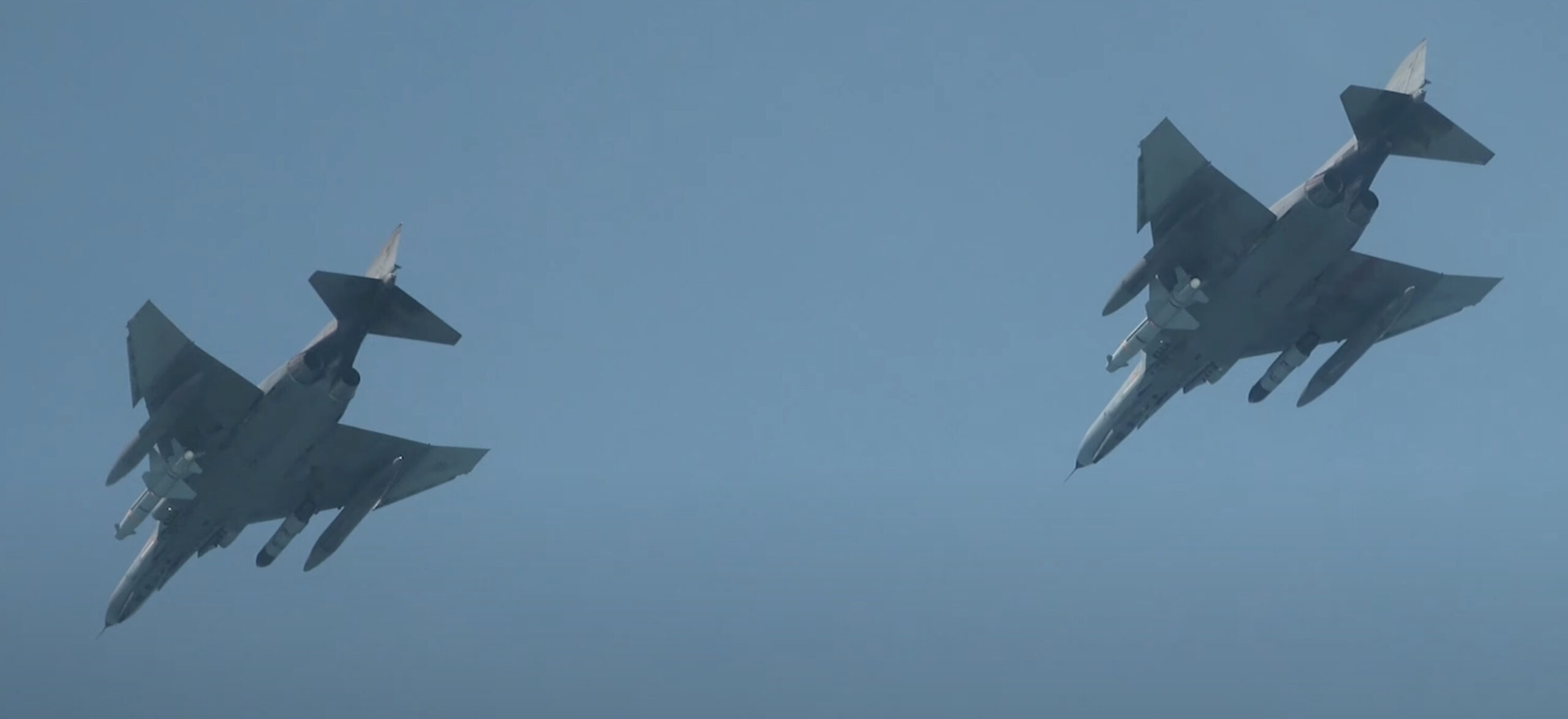
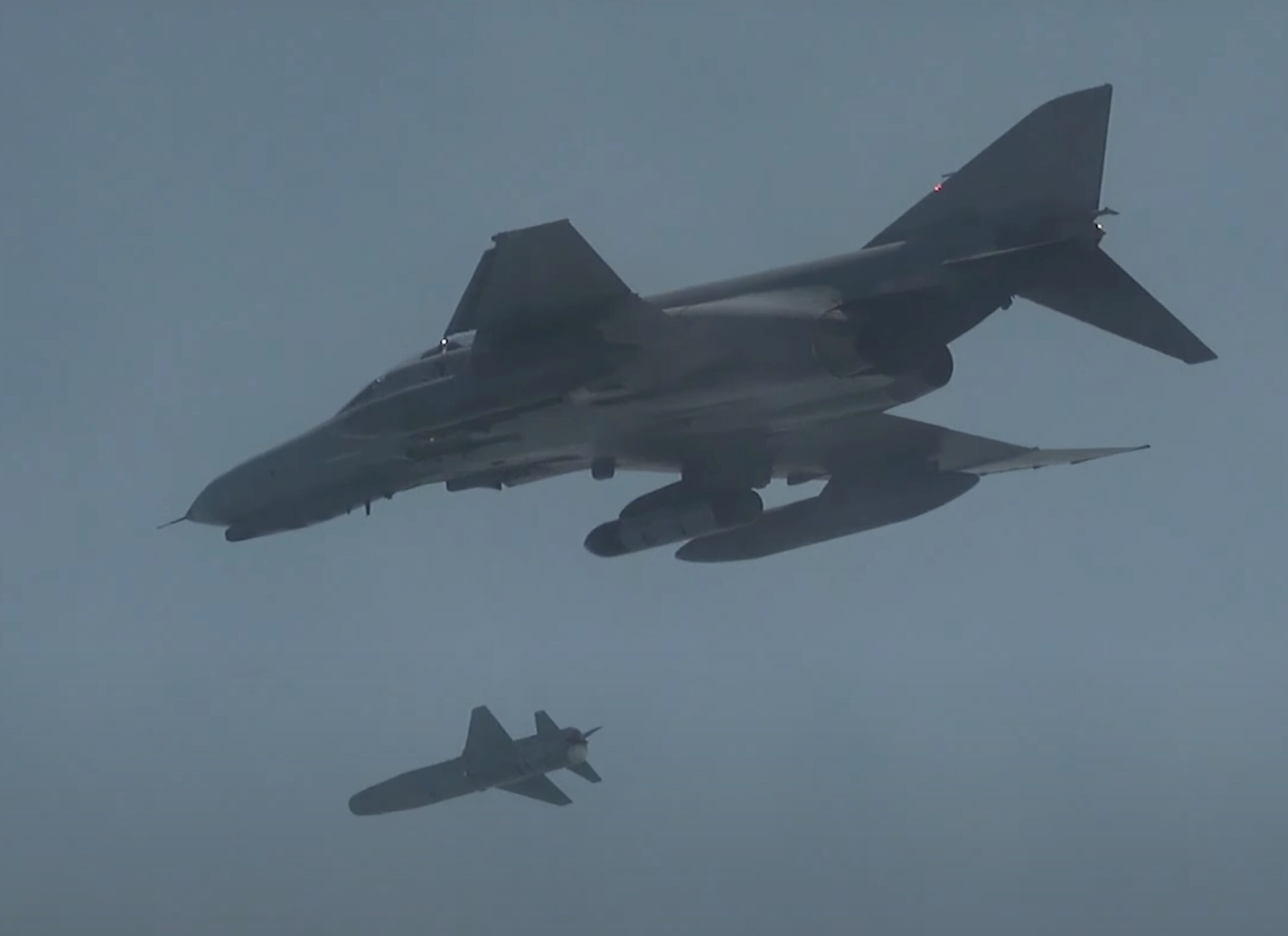

Later on, we see the destructive impact of one of the missiles as it explodes on contact with a rocky outcrop.

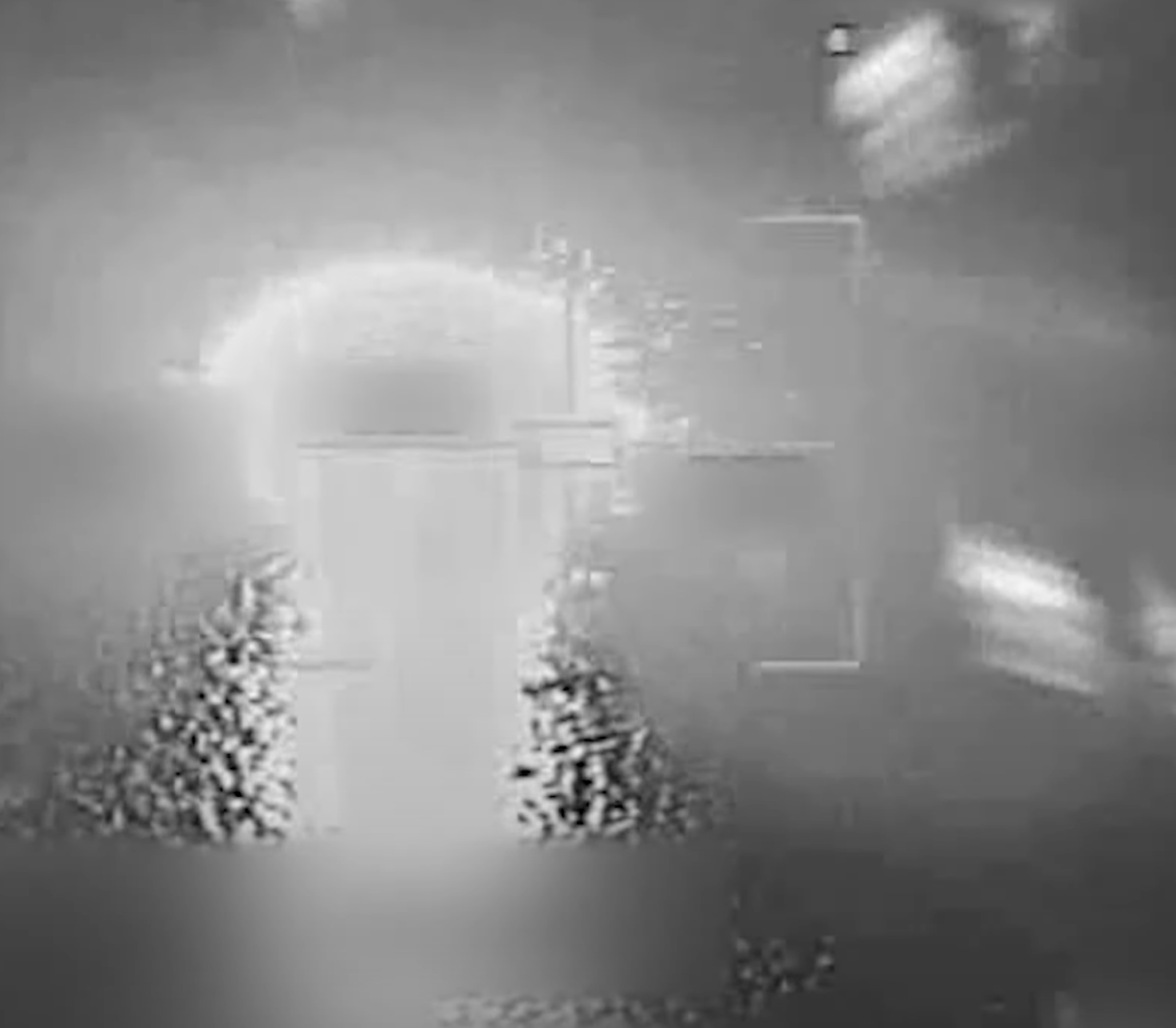

According to Robin Polderman in his book, Modern South Korean Air Power: The Republic of Korea Air Force Today, a total of 36 South Korean F-4Es were modified to employ the AGM-142. In terms of the different Popeye variants used by the ROKAF, “both Popeye 1 (AGM-142A) as well as the C and D variant of the missile [have previously been stated] as in use, while other sources mention versions specifically adjusted for the ROKAF F-4s, being the AGM-142G and AGM-142H.”
The initial tranche of 116 missiles procured in late 1996 comprised “both the Popeye 1 variant, for use on the F-4E,” Polderman states, “and the lighter AGM-142B Popeye 2 for the KF-16C/D [patterned after the U.S. F-16 Fighting Falcon]. Deliveries commenced during 1999, but it is fairly certain the Popeye 2 version for the F-16 was never received.”
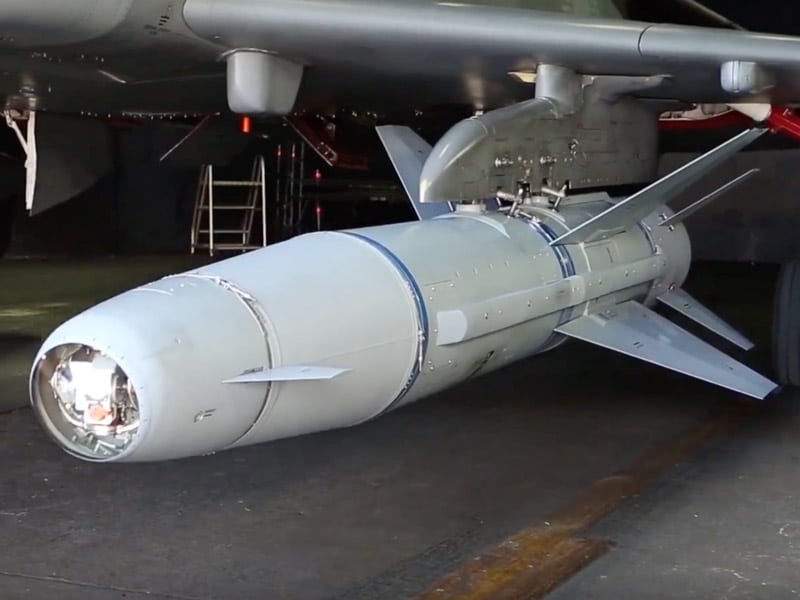
Major Kim Do-hyung, 153rd Fighter Squadron, 10th Fighter Wing, ROKAF, said the following of the final live-fire Popeye exercise, according to a machine translation of Yu Yongwon TV‘s video linked above.
“Through live-fire training, I gained the confidence to hit any target immediately and powerfully. I feel a special emotion to be in charge of the final live firing of Popeye, which was once the most powerful strategic weapon. The ‘Popeye Missile’ that made enemies tremble has disappeared into history, but the powerful majesty of this missile… will continue to remain in the hearts of the Phantom Men.”
In addition to the live-fire exercise conducted on April 18, ROKAF F-4Es also recently performed live-fire exercises with Mk 82 500-pound bombs earlier on April 5, seen in the Yu Yongwon TV video. Three F-4Es, each loaded with 10 Mk 82s, can be seen taking to the sky in the footage — the F-4E can be equipped with up to 24 of the bombs in total.
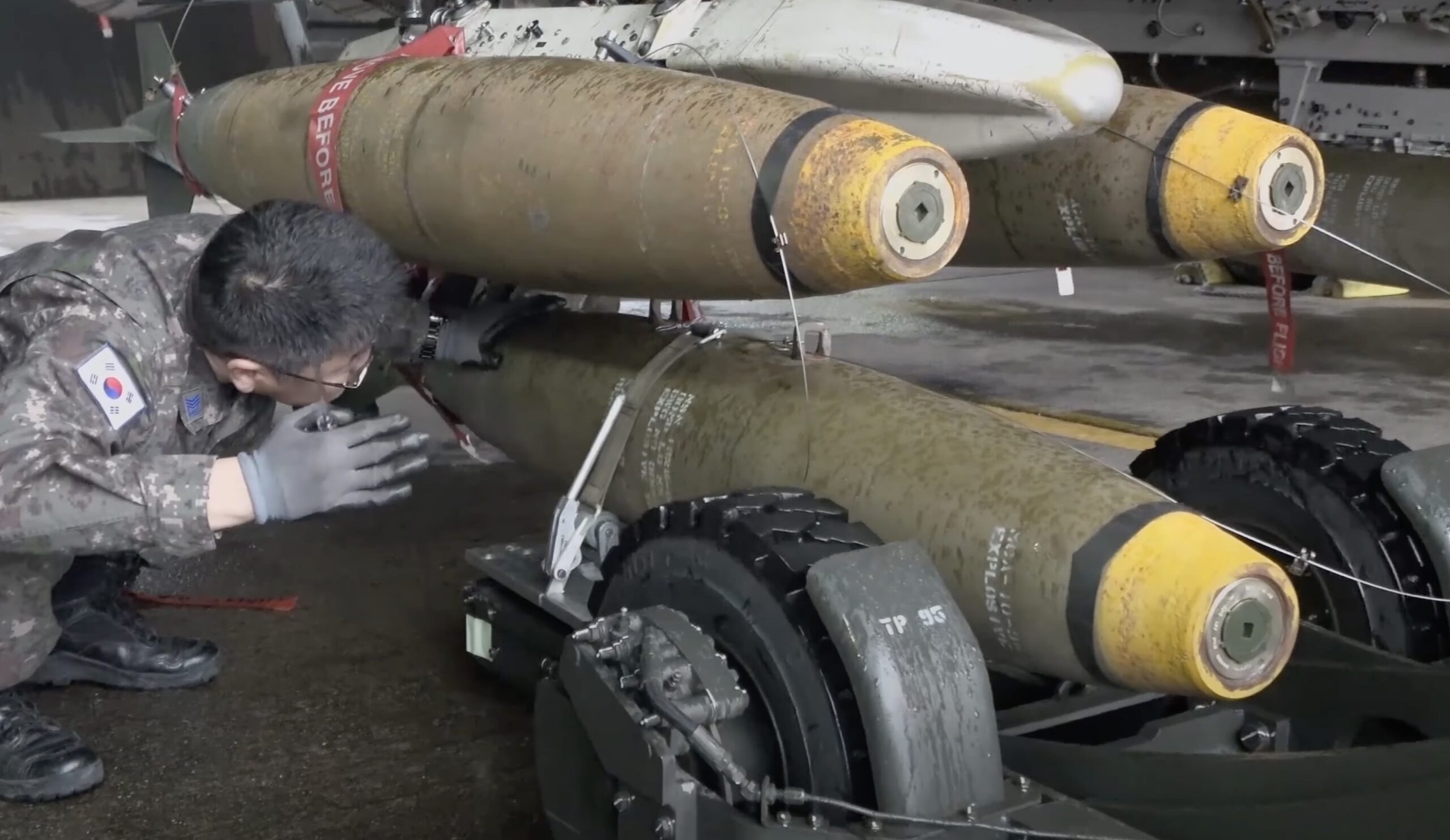
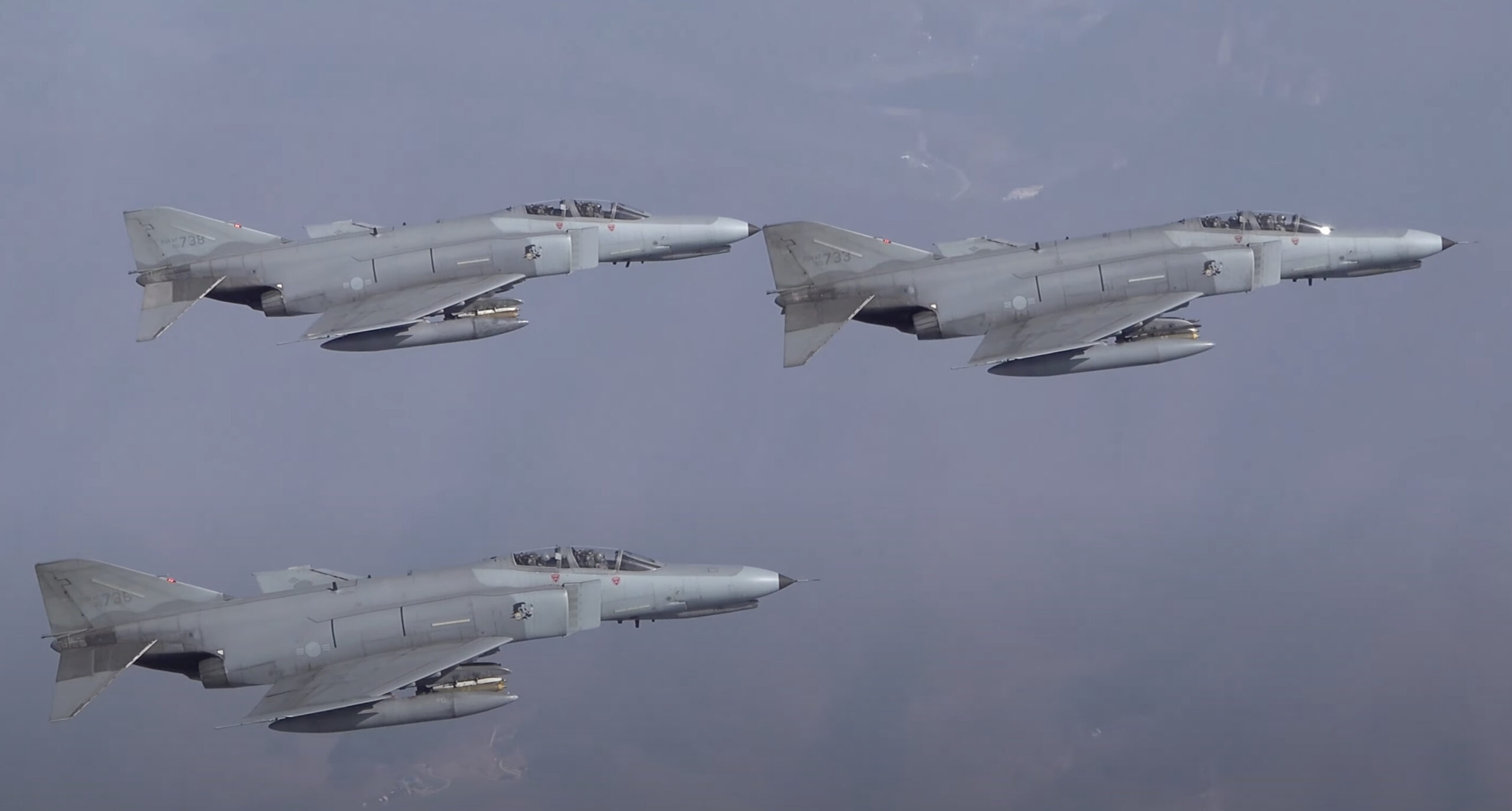
The footage then goes on to show the 30 Mk 82s being dropped in unison before striking a hillside.
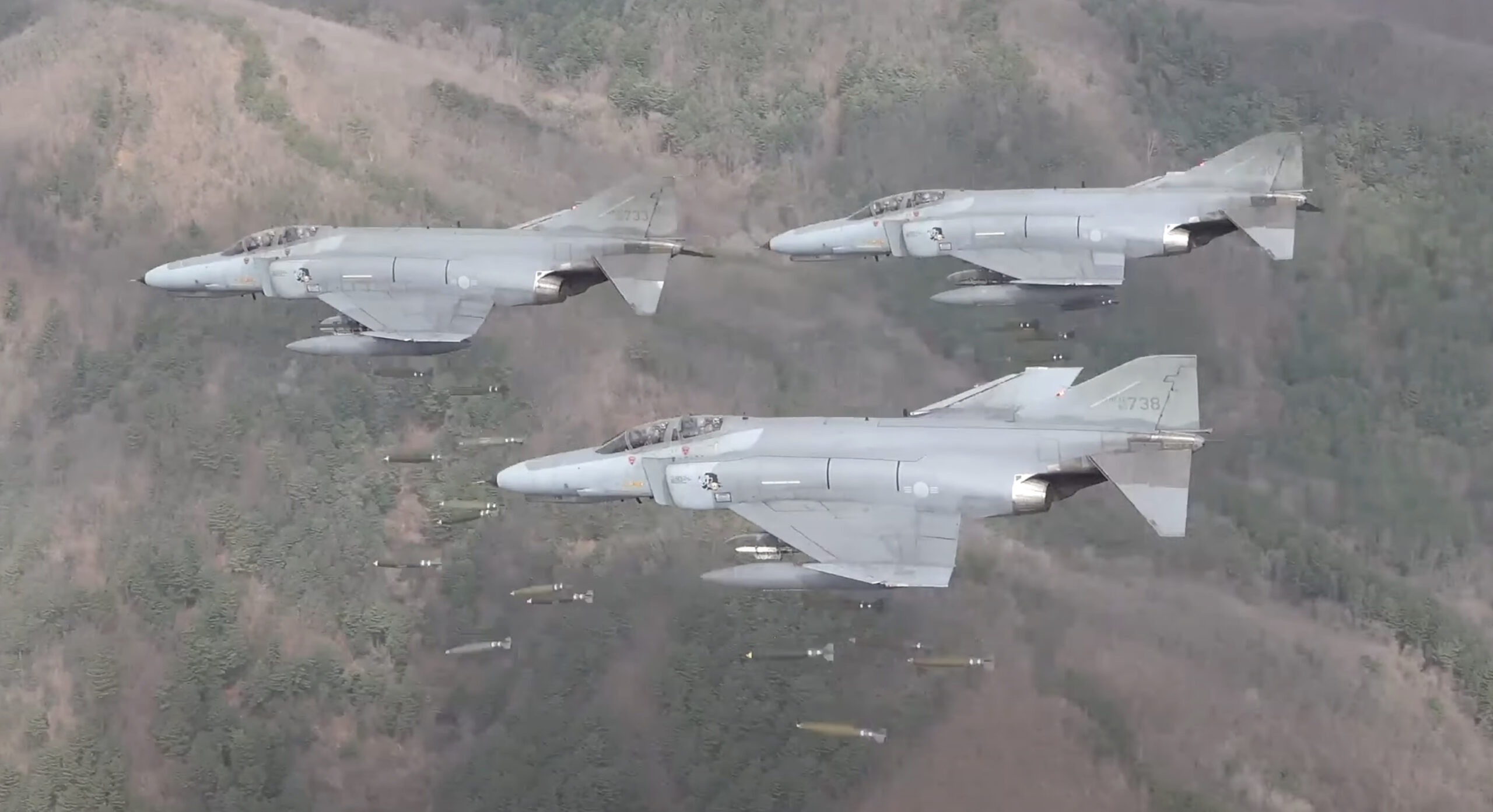
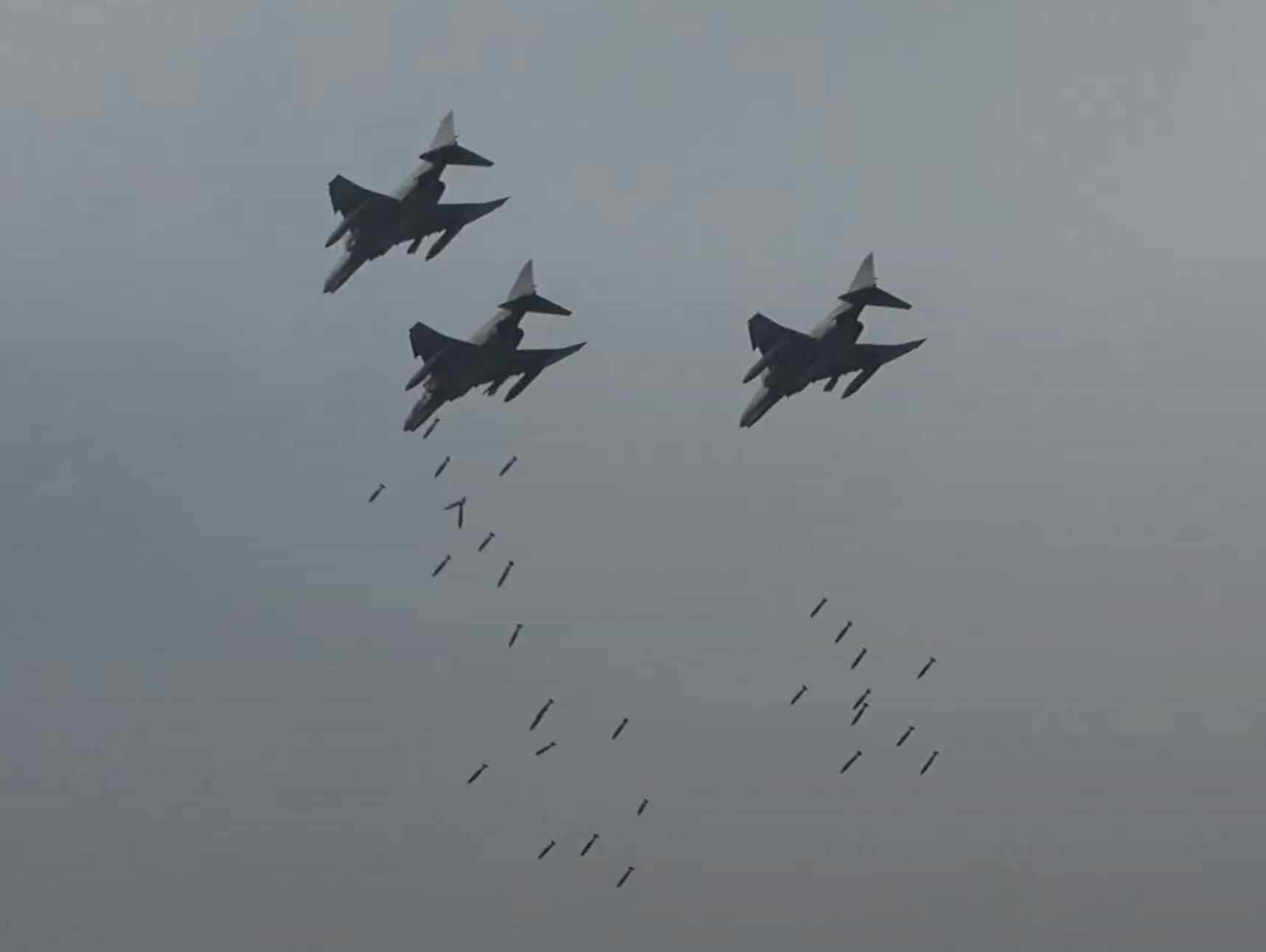

The recent displays of force by ROKAF F-4Es come as the McDonnell Douglas fighter is fast approaching retirement with the service. At present, it only has around 10 F-4Es left out of 103 units used throughout its history. Altogether, the ROKAF operated roughly 220 F-4s of various types across 55 years, and an official ceremony to mark the Phantom’s sunset in South Korea is scheduled to be held at Suwon Air Base on June 7.
The F-4 became South Korea’s premier fighter in 1969, following the introduction of the F-4D. Later, in 1977, the improved F-4E was introduced into service with the ROKAF. In 1994, however, South Korea began to move away from the F-4 as production of the KF-16 started. The F-4E is the last remaining F-4 variant still within the South Korean Air Force’s inventory, as its F-4Ds and RF-4Cs were retired in 2010 and 2014, respectively.
The country’s aging F-4Es, as well as its F-5E/F Tiger IIs, are now set to be replaced by new-generation KF-21 fighters, as well as U.S.-supplied fifth-generation F-35A stealth fighters.
When the F-4E is finally retired from service in South Korea, it will bring another chapter of the legendary F-4 story to a close. While the type was stood down from combat duty with the U.S. military in the 1990s, it was only more recently that Japan’s days of flying it in a combat role came to an end. F-4s will continue to be operated by Greece and Turkey, as well as Iran.
“We’ve flown the Phantom with pride” one of the pilots of the 10th Combat Wing, who participated in the final AGM-142 live-fire exercise, said. “It’s a bittersweet moment to be a part of its retirement.”
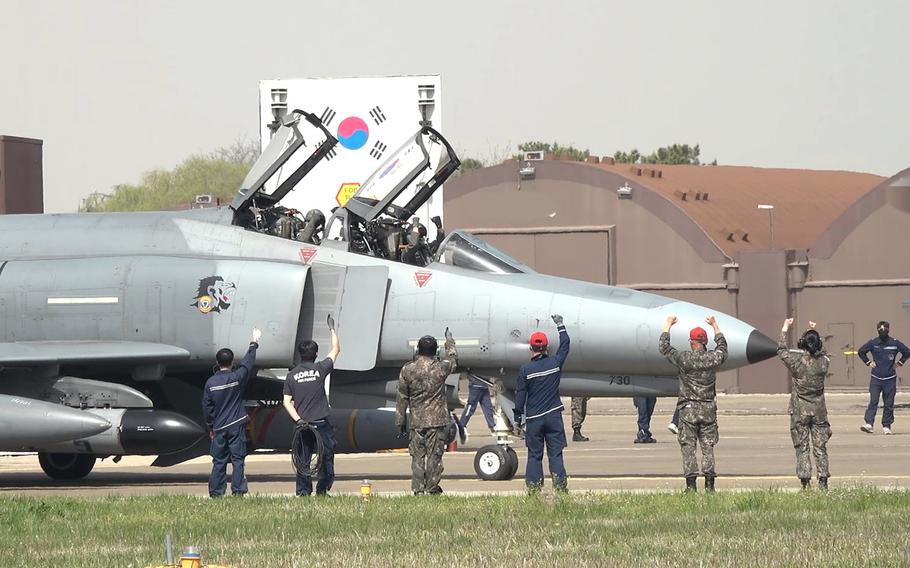
Contact the author: oliver@thewarzone.com
